Segments & Segment lists
In this article, you’ll learn how to:
- View and manage existing segments;
- Create new segments with targeting criteria;
- Delete segments and segment lists;
- Create and manage segment lists;
- Add segments to segment lists.
Segments overview
To access Segments, navigate to Audience > Segments.
Here, you will find an overview of all your segments with key details such as ID, status, name, and targeting criteria.
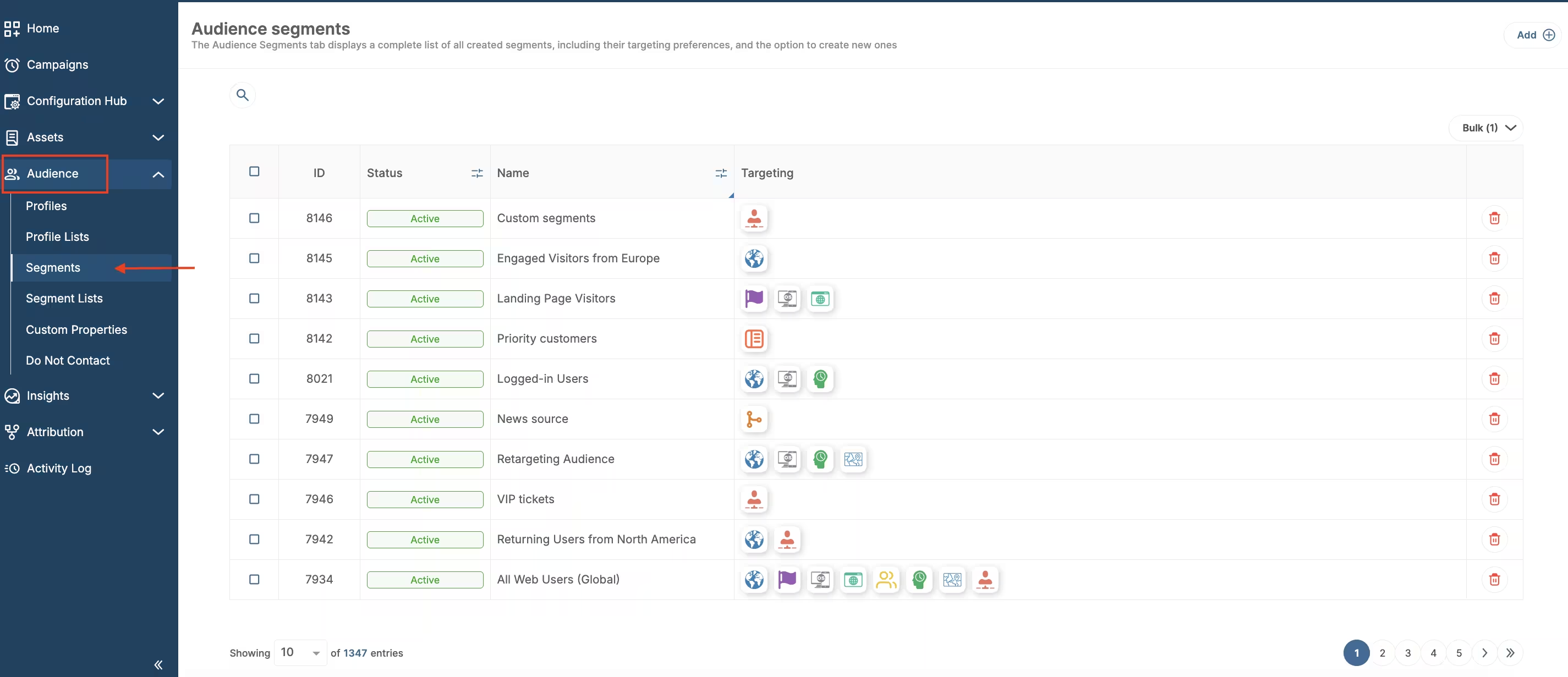
Segments location overview
To delete a segment, click on the delete icon next to it.

Delete segment
Add new segment
To create a new segment, click on the Add button in the top right corner.

Add new segment
Add segment name, switch toggle button to active, and choose segmenting criteria.

Add new segment form
HoodEngage offers 16 targeting options:
- Source: Target profiles based on how they were acquired (e.g., website, app, campaign, etc.)
- Countries: Segment by specific countries where profiles are located
- Remote ID: Target profiles using external system identifiers
- Regions: Group profiles by geographic regions or states
- Languages: Segment based on user’s preferred language settings
- OS: Target profiles by their operating system (iOS, Android, Windows, etc.)
- Browsers: Segment users by their web browser (Chrome, Safari, Firefox, etc.)
- Partners: Target profiles associated with specific partner integrations
- Profile lists: Include or exclude profiles from existing profile lists
- Applications: Segment by specific apps or platforms where profiles are active
- Configuration groups: Target profiles based on configuration group assignments
- Application groups: Segment by application group memberships
- Configurations: Target profiles using specific configuration settings
- Profile: Target individual profiles by their unique profile identifiers
- Profile age: Segment based on how long profiles have been in the system (days, weeks, months)
- Custom Properties: Target profiles using custom data fields and their values
Also, the filters have parameters like IS and IS NOT to specify a condition or filtering data (except for Profile age and Custom Properties):
Edit existing segment
Click on the segment that you want to edit.
You can edit segment’s name, switch toggle button to active or inactive (status), and change targeting criteria.

Edit segment
Once completed, click Confirm to save the changes.
Segment lists
Segment lists are organizational containers that group related segments together for more precise targeting.
To access Segment lists, navigate to Audience > Segment lists.
Here, you will see an overview of your segment lists with key details.

Segments lists location overview
To delete a segment list, click on the delete icon next to the segment list.

Delete segment
To add a new segment list, click Add in the top right corner.

Add new segment list
Name the segment list, and on the left, choose which segments you want to add to that list.
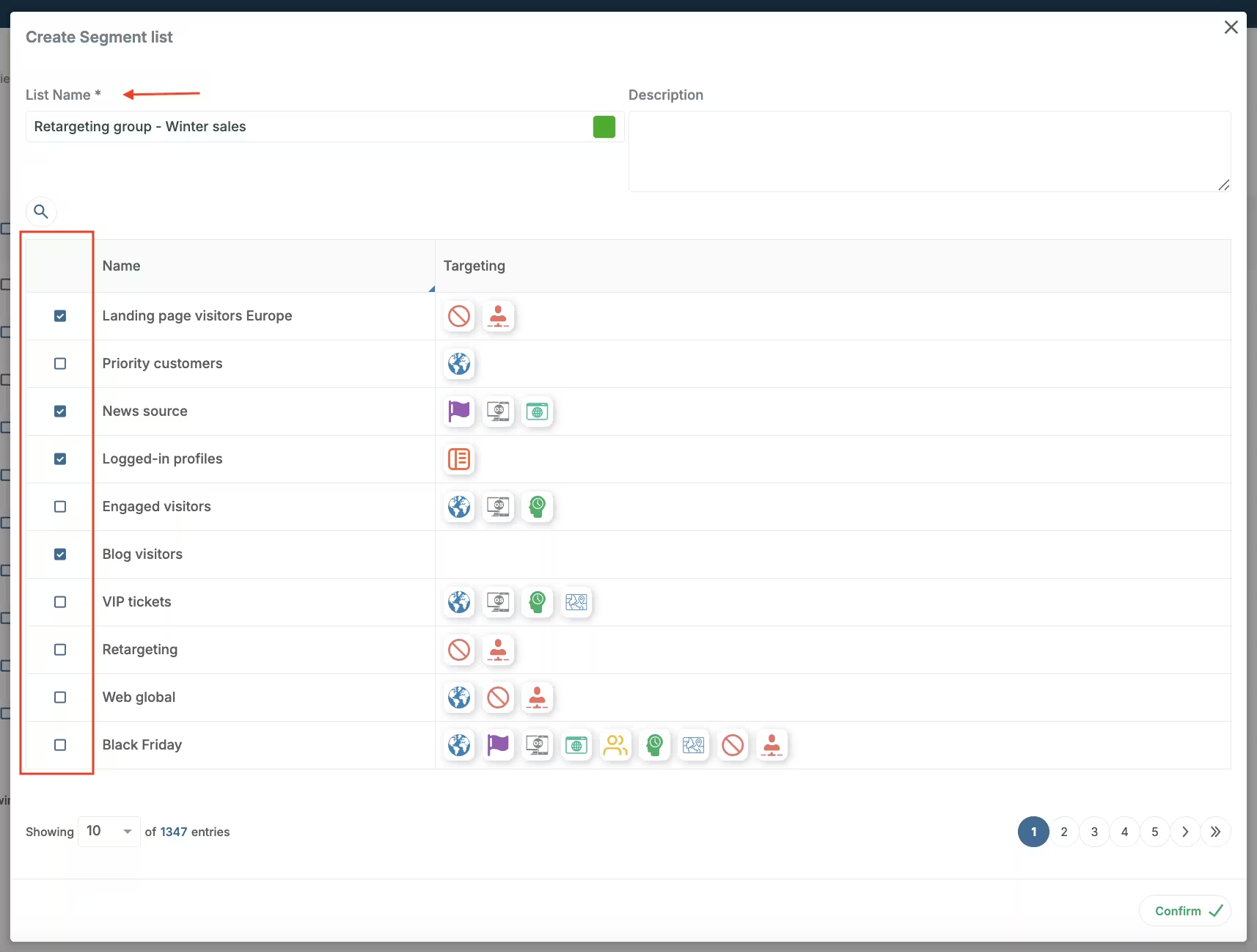
Add new segment list form
Once completed, click Confirm.
Using Segments and Segments lists in Campaigns
Both segments and segment lists can be used in Campaigns to target audience with more precision.
Go to Campaigns > Add (top right corner) > choose a channel and a respective template > Target audience.
Click on the cog button in the top right corner of the Target audience sections.
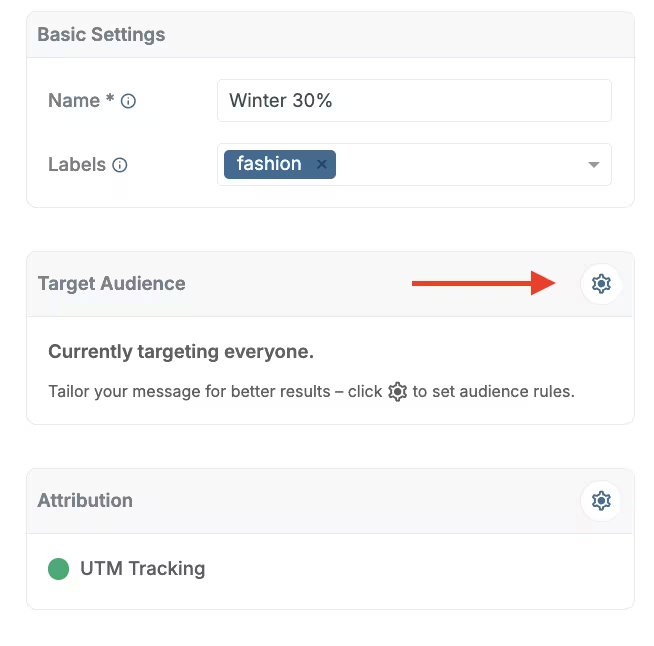
Target audience campaigns
Choose Audience segments for segments and/or Audience lists for segment lists.
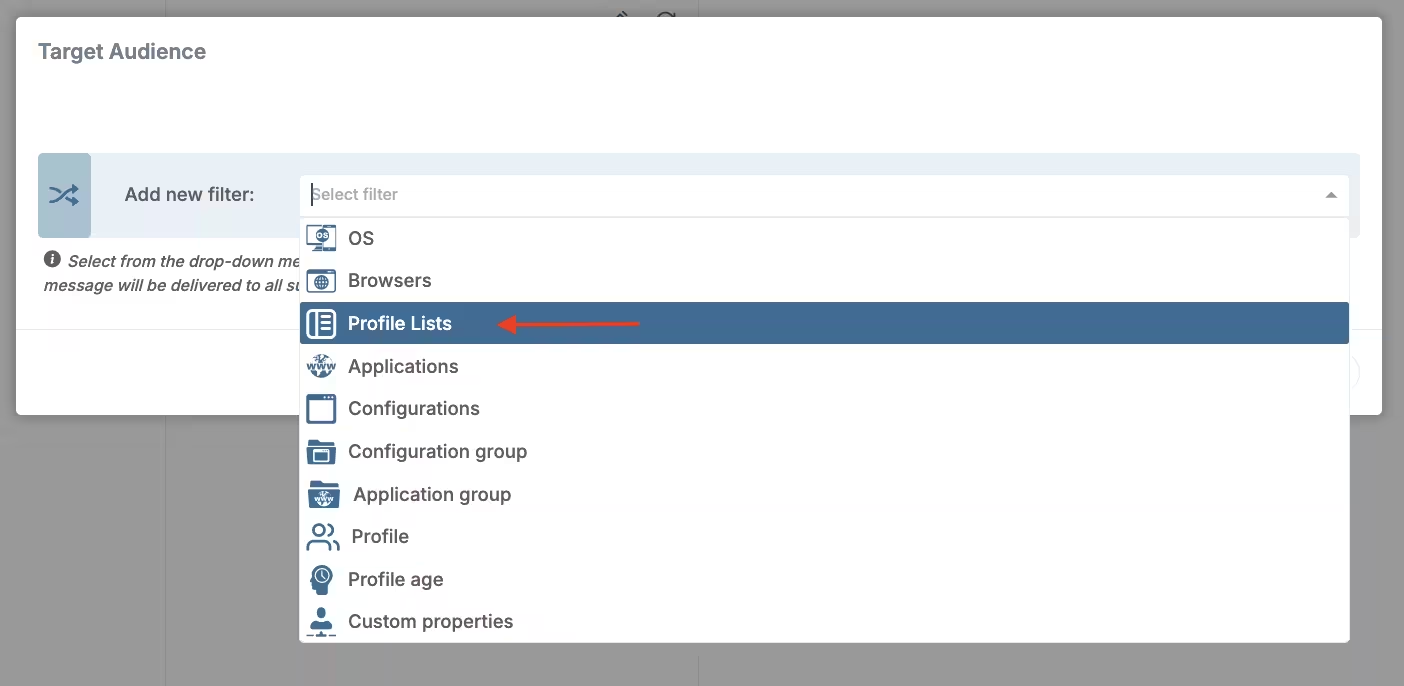
Target audience profile lists
Then, under Audience segments or Audience lists, choose IS or IS NOT, and then one or more segments or segment lists you want to include or exclude.
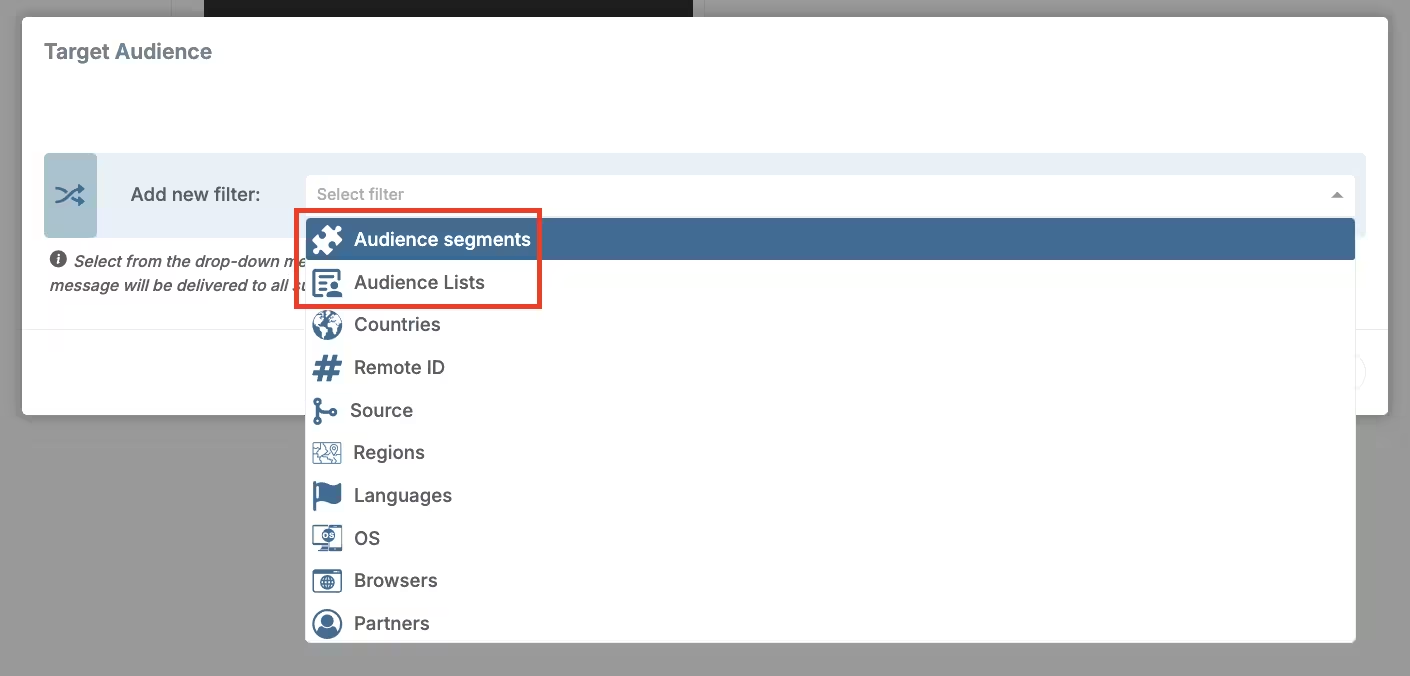
Target audience segments or lists
Click Confirm to save changes.
